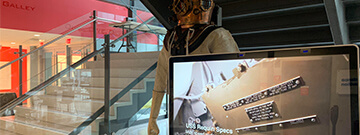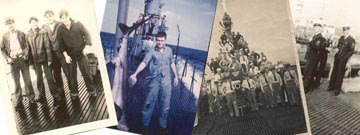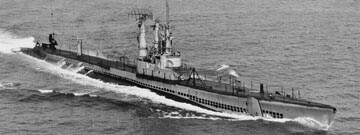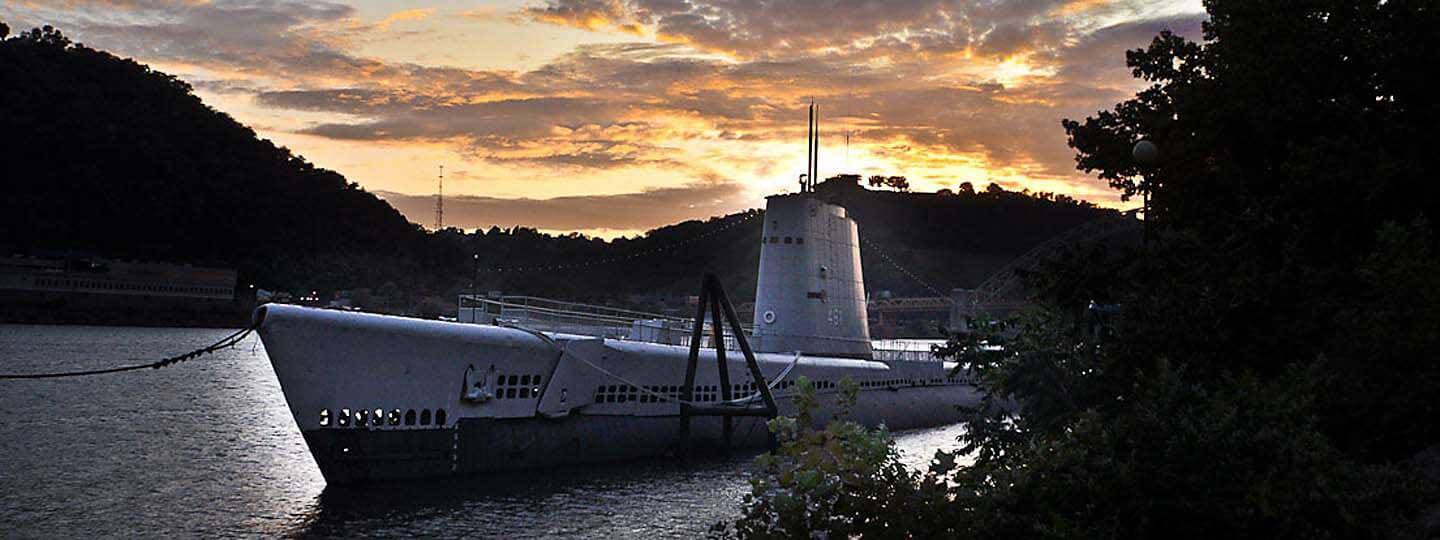
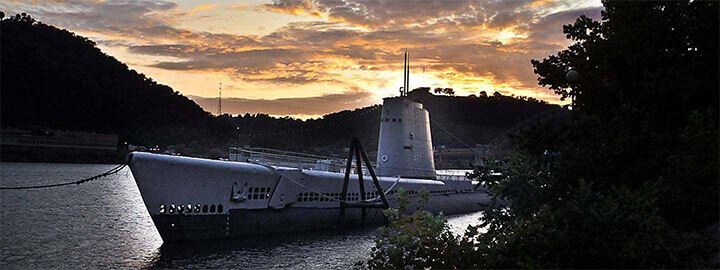
USS Requin (SS 481) Submarine
USS Requin (SS 481) Submarine Hours
Self-guided tours are included with General Admission on a first-come, first-served basis and are subject to availability. Tours operate at a 20-minute interval with a limited capacity. Timed tickets are required and can be obtained on the day of your visit at the Requin Gateway located on the Ground Floor. Full mobility is required for this experience.
A uniquely immersive experience!
Come aboard to learn how 80 men used their expertise, humor and sheer ingenuity to carve out a rough and adventurous life during USS Requin’s (SS 481) lengthy defense and scientific missions, some of which are still classified to this day! State-of-the-art and battle ready when it set out just days before the end of World War II, Requin holds the distinction of being the Navy’s first Radar Picket submarine.
USS Requin Vital Statistics
Class: Tench
Building Yard: Portsmouth Naval Shipyard, Kittery, Maine
Length: 311’9”
Width: 27’3”
Height: 49’
Weight: 1,516 tons surfaced, 2,426 submerged
Engines: Four – 1,600-horsepower diesels
Generators: Four – 1,100 kilowatt direct current
Batteries: Two – 126 lead acid battery cells in each
Motors: Two – 2,700 horsepower
Fuel Capacity: 113,881 gallons
Cruising Range: 11,000 miles
Maximum Speed: 21 knots surfaced, 10 knots submerged
Maximum Depth: 412’
Crew: 10 officers, 71–95 enlisted men
Tour Length: 75–90 days
Maximum Time Submerged: 48 hours at a time
USS Requin Compartments
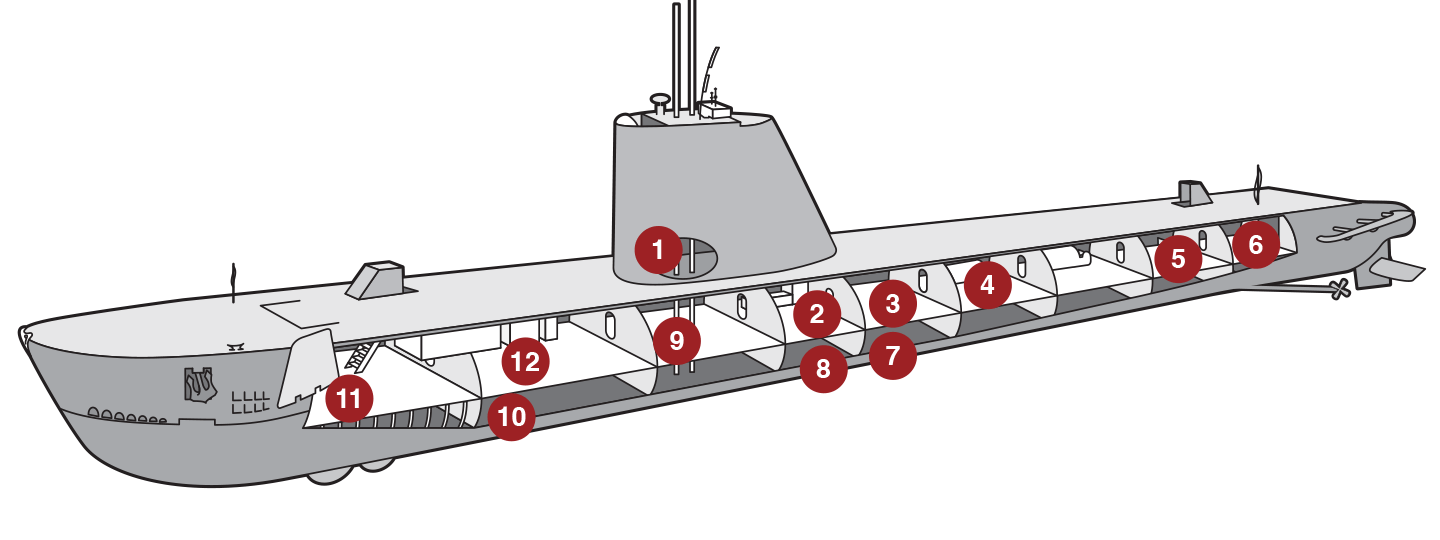
- Conning Tower
Contains periscopes, steering, and torpedo launching equipment.The Radio Room, which is still operational, is to the right on the way to the next compartment.
- Mess Decks
24 men at a time could eat meals, spend free time, and watch movies from four tables. - Berthing
36 bunks for crew were housed between the mess decks and crew’s shower and toilet facilities. - Forward and After Engine Rooms
Four diesel engines, four generators, and two desalination tanks take up two compartments. - Maneuvering Room
All electricity, as well as the submarine’s speed, was controlled from a split console center. - Stern Room
Four torpedo tubes faced out the back of the submarine until 1946, when it was converted to a radar control center. Twenty-one bunks for crew hung from
hooks on the walls. - After Battery
126 lead acid battery cells were stored beneath Berthing. - Cold Storage/Pantry
4.5 tons of food were stored beneath the Mess Decks and throughout the submarine. - Control Room
Diving and surfacing controls line the walls around the submarine’s main gyrocompass. - Forward Battery
126 lead acid battery cells were stored beneath Officers Country. - Forward Torpedo Room
Six torpedo tubes face out the front of the submarine. The compartment could hold up to 18 torpedoes and had bunks for 14 crew. - Officers Country
Quarters for 10 officers and five senior enlisted men include staterooms, pantry, wardroom, and office.
How a Submarine Dives
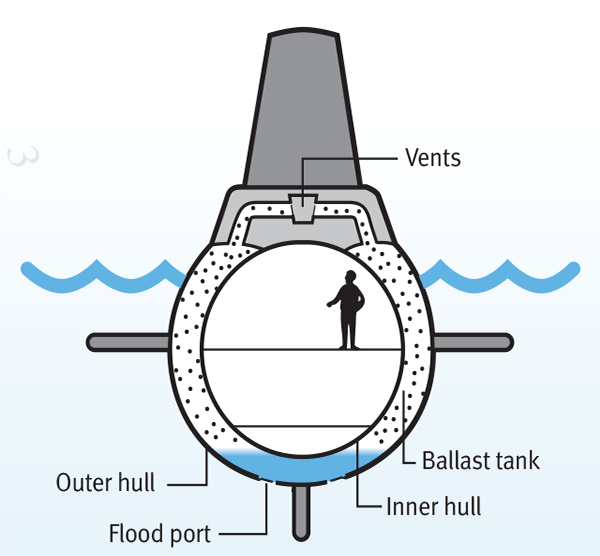
Submarines have ballast tanks between their inner and outer hulls. When the submarine is on the surface, the ballast tanks are filled with air and the submarine floats.
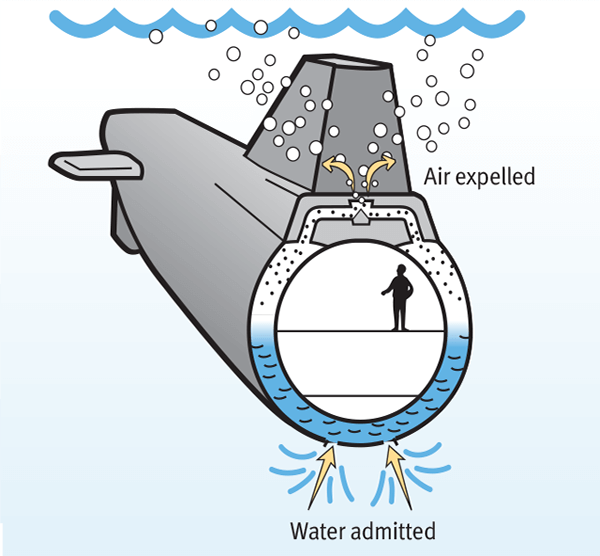
To dive, vents are opened on the bottom of the submarine to allow seawater into the ballast tanks. As the water rushes in, the air is forced out through vents in the upper hull. The change in weight causes the submarine to submerge.
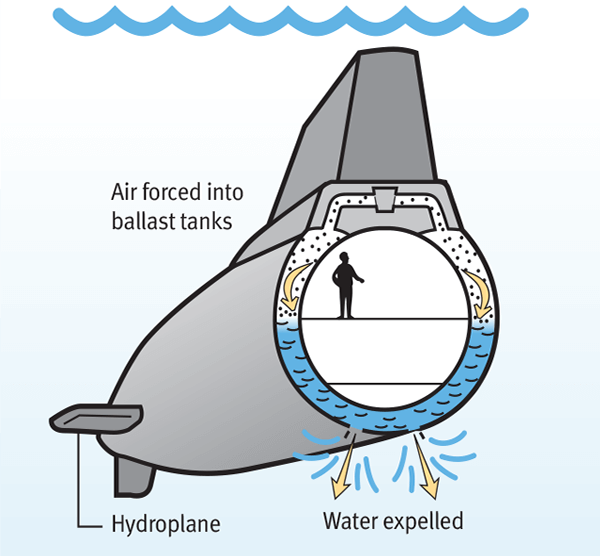
To surface, air is pumped back into the ballast tanks, which forces the seawater out through the bottom vents. The submarine rises as it becomes lighter. Movable fins on the submarine sides in the front and back allow the crew to control the depth and stability of the submarine.
Timeline
1944
- August 24
– Keel laid Portsmouth Naval Shipyard, Kittery, Maine
1945
- January 1
– Launched - April 28
– Officially commissioned - August 15
– In Pearl Harbor when WWII ended, completed sole war patrol - August 18
– Went back to port
1946
- – Conversion to the US Navy’s first Radar Picket Submarine
1946–1959
- – Patrolled the East Coast and Northern Atlantic during the Cold War
1959
- June
– Converted to Fleet Snorkel submarine and large fiberglass sail installed
1968
- June
– Reclassified with non-combat duties - December 3, 10:20 am
– Decommissioned
1969
- – Became a Naval Reserve trainer in St. Petersburg, FL
1971
- December 20
– Struck from the Navy list
1972
- July
Became a tourist attraction in Tampa, FL
1990
- April 9
– Congress passed a bill to allow Requin’s transfer to Carnegie Science Center - August 10
– Began trip up Mississippi River under tow to Ohio River - September 4
– Arrived in Pittsburgh
You may also like…
Mars: The Next Giant Leap
Mars: The Next Giant Leap®
Laser Shows
Laser Shows
The Rangos Giant Cinema
The Rangos Giant Cinema



